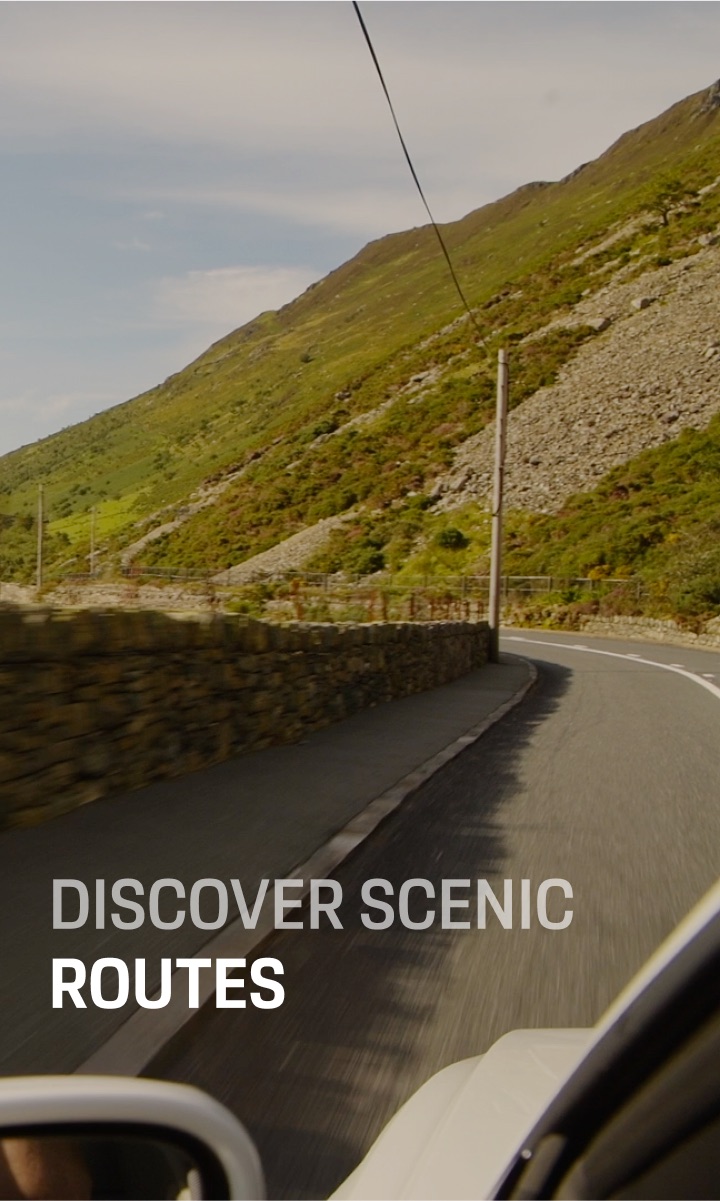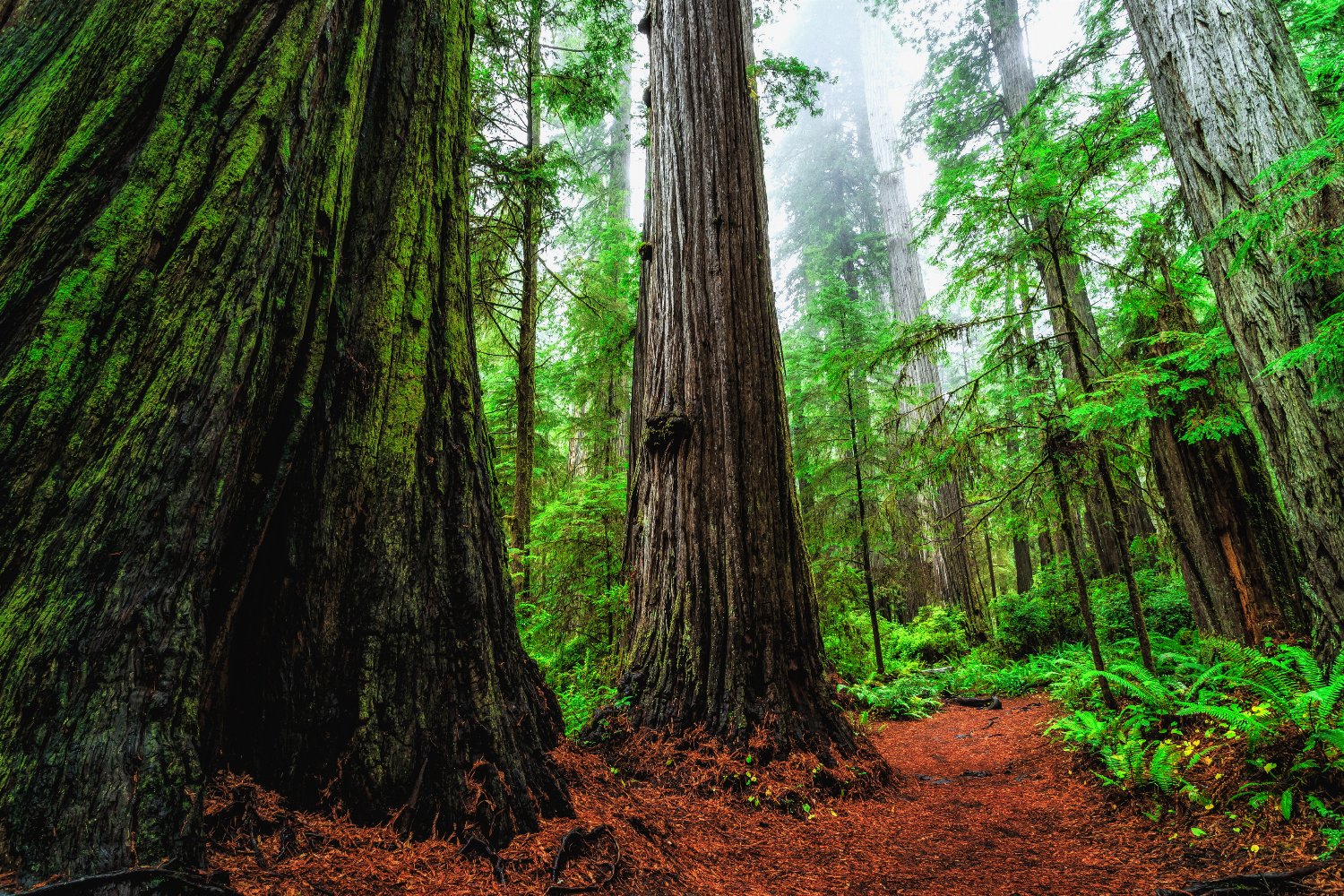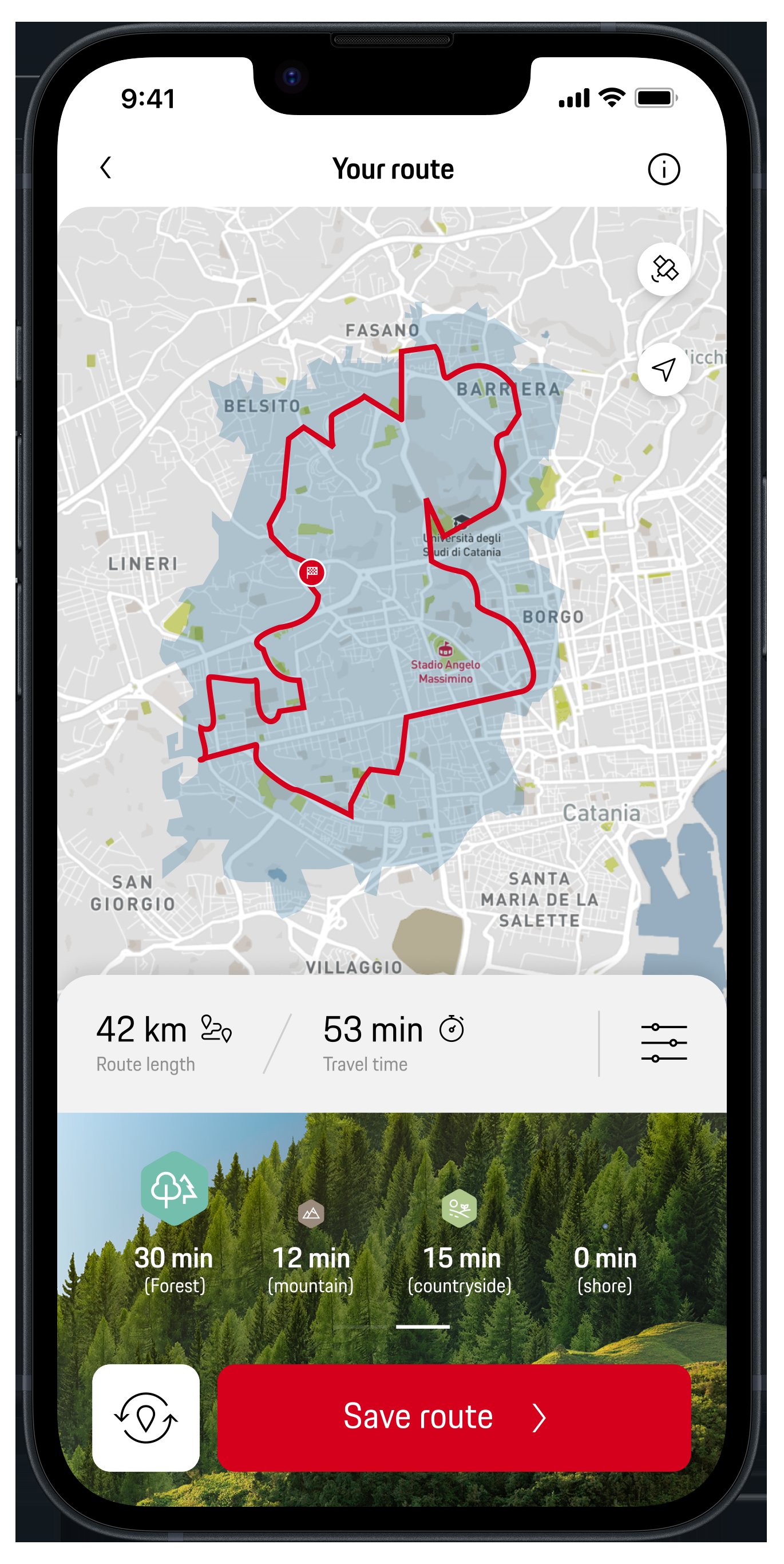
Sequoia National Park and its General Sherman Tree
A Forest of Giants in Mount Whitney’s Shadow
America’s golden state is jam-packed with record-breaking natural phenomena: the highest mountain, the deepest canyon, and the hottest desert. In Sequoia National Park, visitors can hike among other greats: giant sequoias, the world’s largest trees, tower over the slopes of the western Sierra Nevada at an elevation between 5,000 and 8,200 feet (1,500 – 2,400 meters), and seeing them in person gives a whole new appreciation of the awesome power of nature.
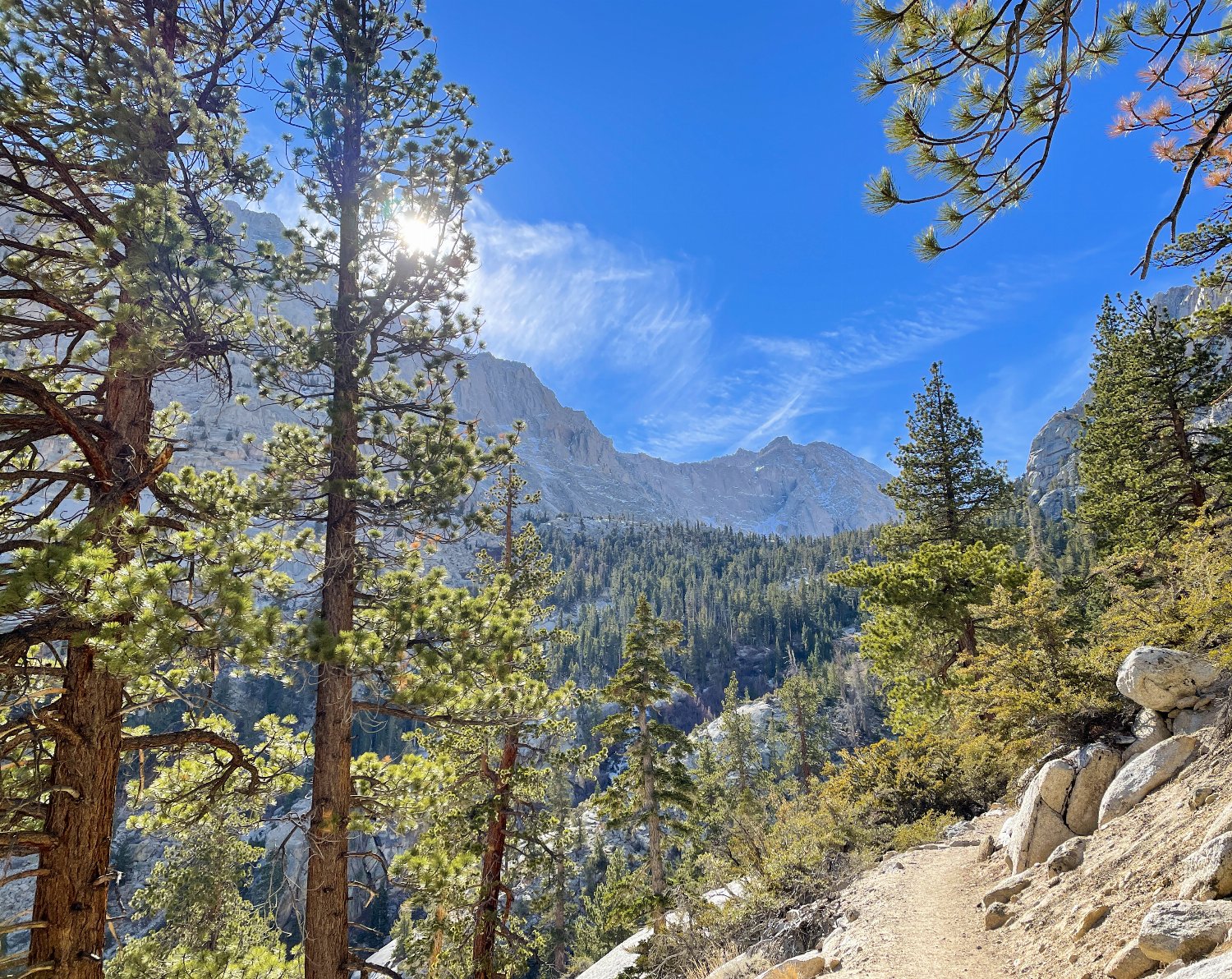
Visiting Sequoia National Park – Know Your Facts
Established on September 25, 1890, Sequoia National Park encompasses 629 square miles (1,629 square kilometers) of dense redwood forest in east-central California. Next to the world’s largest and oldest living things, there are more natural records close by. To the east, Mount Whitney is the highest point in the contiguous United States at 14,494 feet (4,418 meters), and Kings Canyon National Park , to the north, is home to America’s deepest canyon.
The Sequoia-Kings Canyon region has been a UNESCO biosphere reserve since 1976. Although there are many natural wonders to discover, the park’s proximity to the more popular Yosemite National Park makes it one of California’s less-traveled, peaceful national parks to explore.
General Sherman Tree and other Giants
Its astounding metrics put General Sherman, the premier Californian tree giant, into perspective. At 36 feet (11 meters) thick, and 275 feet (84 meters) tall, General Sherman is broader than most houses and taller than many skyscrapers. The 2200-year-old giant weighs 1,400 tons (1,270 tonnes) and is the largest tree on earth by volume. In fact, Sequoia National Forest houses five of the ten largest trees on earth. They’re best explored on the easy-and-educational Big Trees Trail winding through the redwood forest along a fragrant meadow. In a converted historic market building, you’ll find the Giant Forest Museum, which provides background information on the natural history of the area.
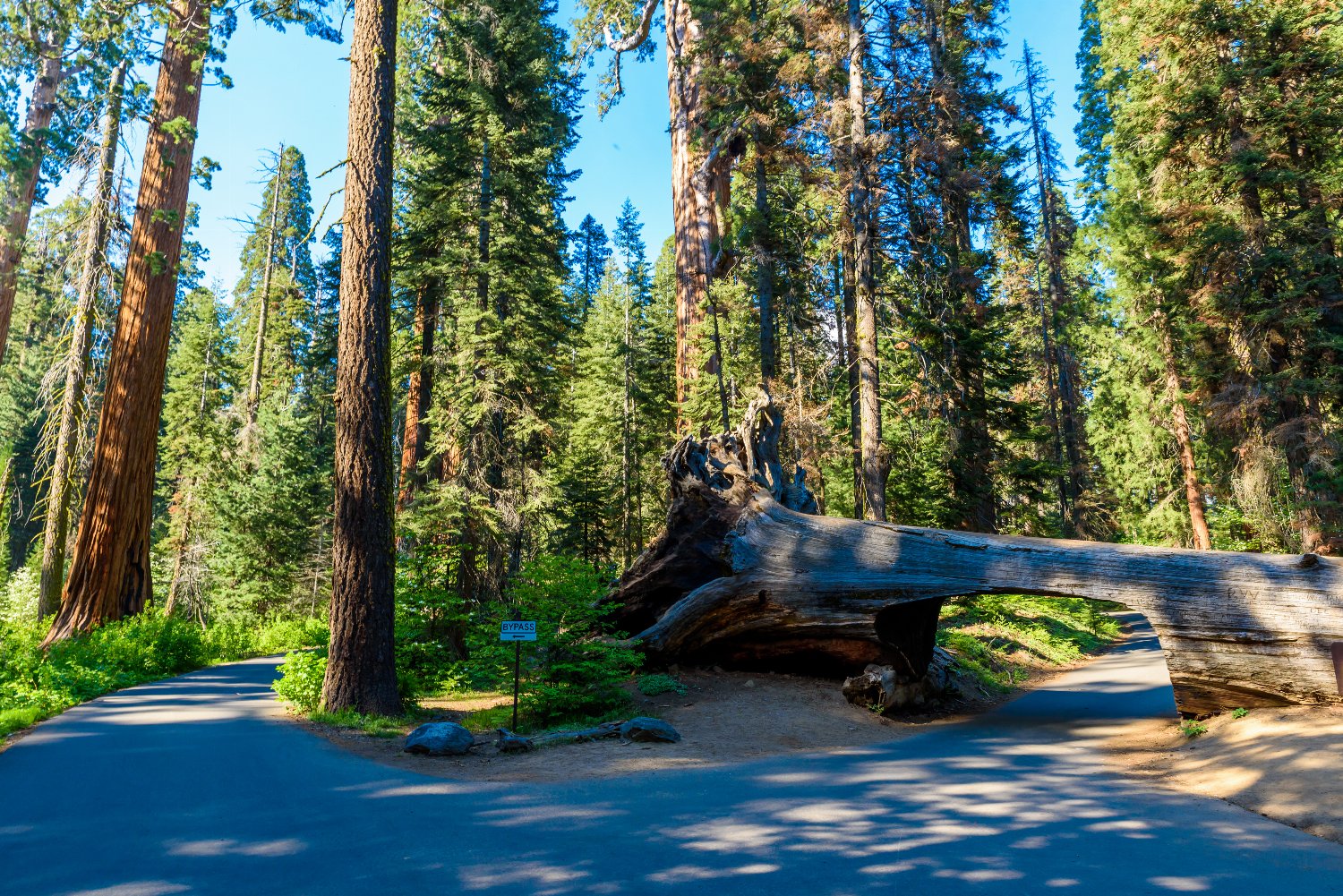
The Best Places to Visit in Sequoia National Park
The national park’s trails are the true stars of the show; there’s no better way to experience the magic of the behemoths than on the many marvelous hikes, drives, and meadows sprawling across the park. Some of the best include:
- Congress Trail, a 2.7-mile (4.3-kilometer) roundtrip trail along some of the forest’s most mature sequoias. Starting near General Sherman, the trail is the only fully paved route in the park, and an easy hike for any skill level.
- Tunnel Log, one of Sequoia National Park’s most famous photographed motives – a gargantuan fallen tree you can drive through. Shortly after the completion of Crescent Meadow Road, a giant sequoia fell across it in 1935. The tree was too large to move, so the park administration simply carved a car-sized tunnel into it that is still used today.
- Tokopah Falls Trail, a quintessential 4-mile (6.4-kilometer) Sierra canyon trail featuring a thundering river, spectacular waterfall, and awe-inspiring vistas of the Sierra Nevada’s granite walls, often veiled by giant redwoods.
- Crescent Meadow, a tranquil meadow clearing. In spring and early summer, it turns into a blooming sea of color. In total, there are six meadows in the forest. Crescent Meadow is the easiest to reach and arguably the most beautiful.
How to Get to Sequoia National Park
Sequoia National Park is located east of Visalia, California. Most travelers stop here en route from Yosemite, Los Angeles, or Death Valley. From the north, take Highway 180 from Fresno; from the south, Highway 198 from Visalia is the more winding and picturesque route. Generals Highway connects the two routes, and driving along it, you’ll find Lodgepole Visitor Center and Village, General Sherman, the Giant Forest Museum, and Moro Rock, Sequoia National Park’s giant dome-shaped granite monolith. From November to March, the weather can be more challenging, so snow chains may be necessary.

